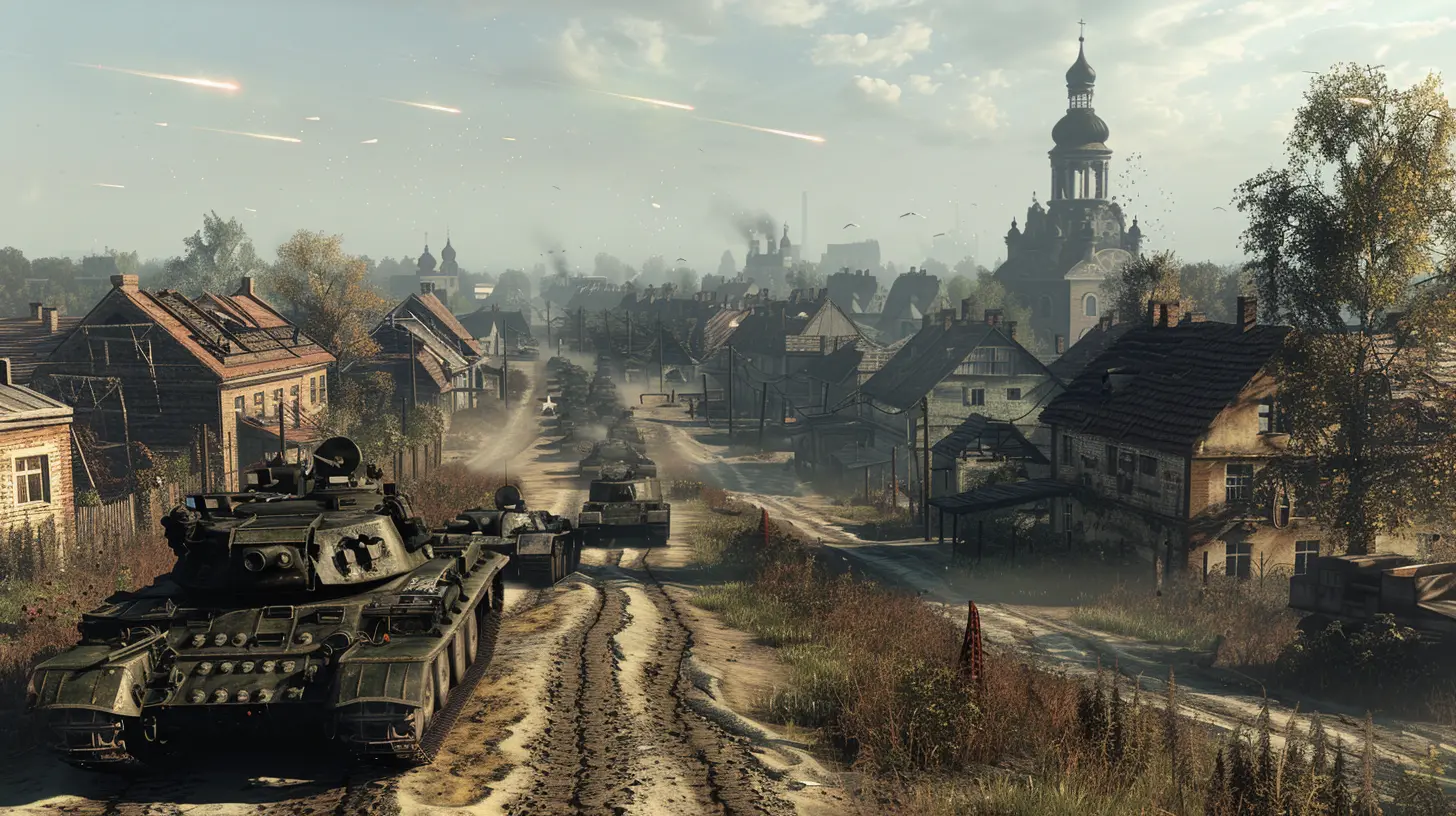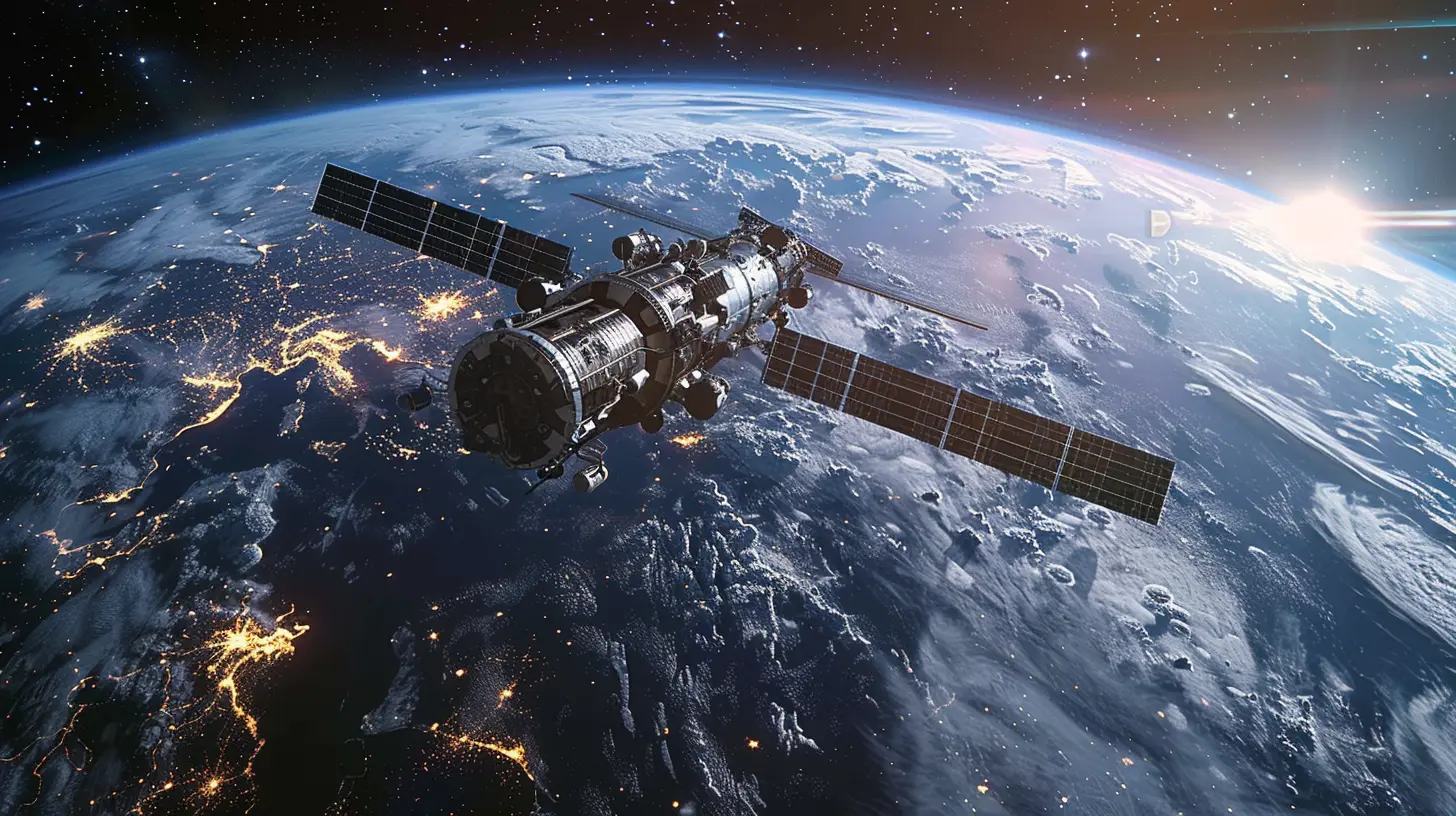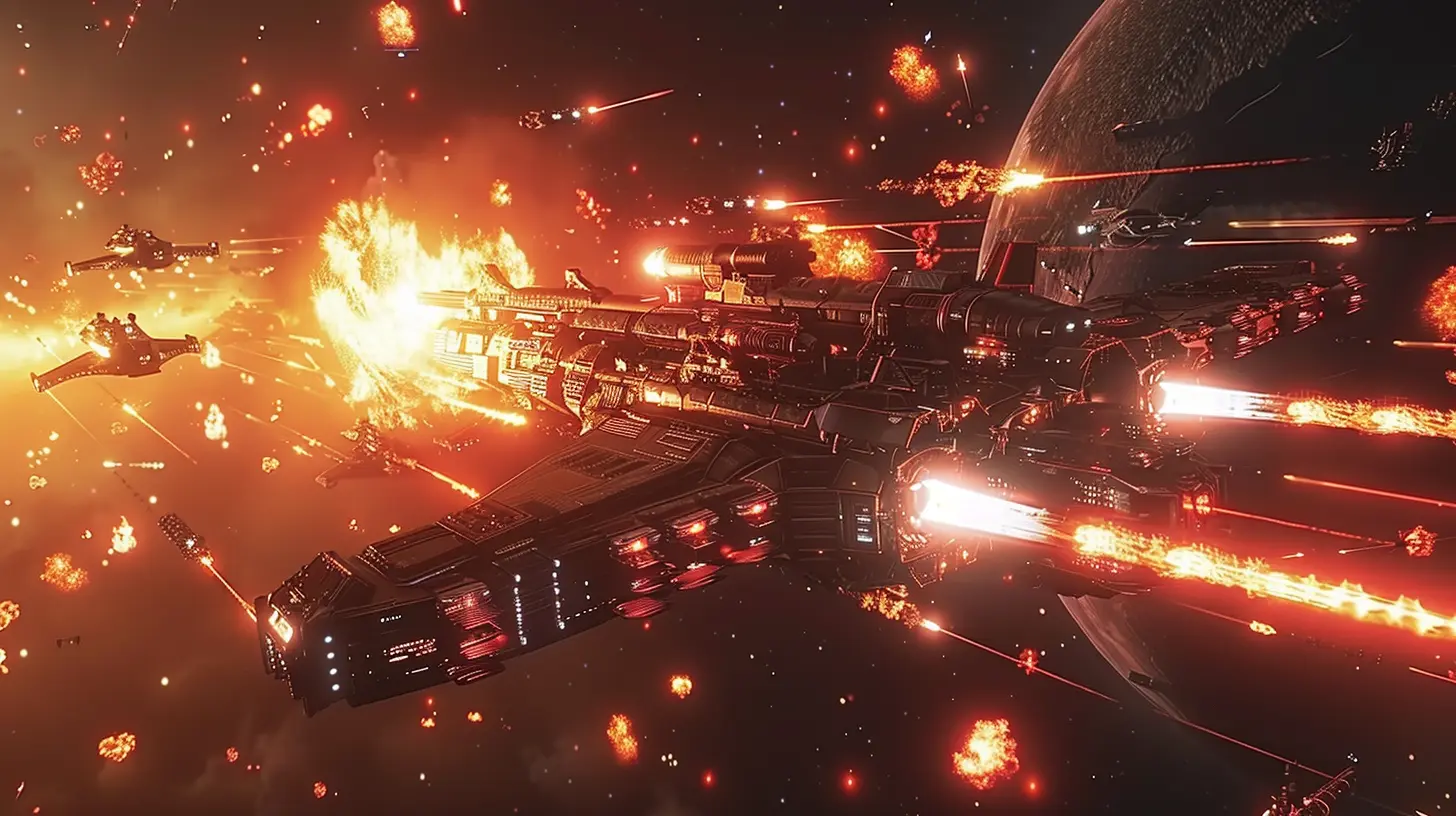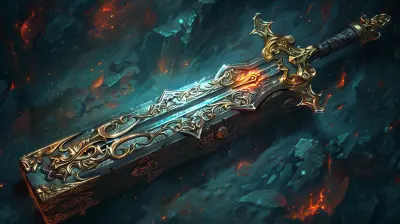From Trenches to Space: The Expanding World of War Games
31 July 2025
War games have evolved like an epic battlefield strategy—constantly adapting, innovating, and redefining themselves to stay ahead of the curve. What started as simple skirmishes on pixelated screens has now transformed into jaw-dropping battle simulations that span the depths of outer space. Today, war games are no longer confined to the muddy trenches of bygone wars; they're taking players on interstellar journeys, pushing the boundaries of creativity, storytelling, and strategy.
Whether you're a hardcore gamer with a knack for strategy or a casual player dropping into a virtual warzone for some weekend fun, you've probably noticed how far war games have come. In this article, we'll take a deep dive into the rise of war games, how they've expanded from historical battlefields to futuristic sci-fi landscapes, and why their appeal continues to grow. So, buckle up—it’s going to be a thrilling ride! 
The Humble Beginnings: When War Games Were Simple
Let’s rewind the clock. War games weren't always as flashy as they are today. Back in the 1980s and 1990s, most games focused on basic mechanics and straightforward objectives. Remember classics like Command & Conquer, Age of Empires, or even the early Call of Duty games? They put players in historical settings like World War II or medieval times, giving them the satisfaction of commanding entire armies or infiltrating enemy territories.These games were grounded in realism and history. You fought battles that actually happened. You built cities, managed resources, and waged pixelated wars. And while they lacked the cinematic flair we see in today’s games, they made up for it with pure strategy. Back then, it was all about brains over brawn.
But even in their simplicity, these early war games had something special. They immersed you in history, letting you rewrite it or relive it from the eyes of a soldier or commander. They sparked a love for tactical thinking while making you feel like you were influencing the tides of war. 
The Leap from History to Fiction
Somewhere along the way, developers started asking, “What if?” What if wars weren’t confined to human history alone? What if we imagined new worlds, new conflicts, and new stakes?This question led war games to branch out into fictional and futuristic settings. Titles like Halo and Gears of War brought wars to alien territories, while games like Battlefield 2042 imagined what armed conflicts might look like in a world ravaged by climate disasters. These games didn’t just let you fight battles—they pushed you to think about humanity’s future and even moral dilemmas tied to warfare.
And let’s not forget the rise of alternate history games. Think about Wolfenstein: The New Order, which asked, “What if the Nazis won World War II?” Or Fallout, which depicted a post-nuclear apocalypse where survival itself became a battle. By bending historical truths (or outright discarding them), these games created unforgettable universes where players could immerse themselves completely. 
The Shift to Multiplayer Mayhem
Now, I can’t talk about the evolution of war games without mentioning the golden age of multiplayer. Remember the first time you hopped online and realized you weren’t just playing against AI anymore? It was a game-changer—pun fully intended.Games like Call of Duty: Modern Warfare took the world by storm with fast-paced multiplayer modes that pit players against each other in frenetic combat zones. Suddenly, war games weren’t just about you versus the game anymore. They were about you versus the world (or at least a lobby full of strangers).
Why do players love multiplayer war games so much? It’s simple. Humans are unpredictable. Unlike AI, real players can outsmart you, surprise you, or make ridiculously hilarious mistakes. Every match feels different, keeping you on your toes and making every victory feel hard-earned.
Plus, there’s the social aspect. Whether you’re teaming up with friends or trading friendly trash talk with opponents, multiplayer adds a sense of community to war games. It’s like being part of a modern-day battalion, minus the actual danger. 
Space: The Final (Gaming) Frontier
So, we’ve talked about historical and fictional wars—but what about the rise of space warfare? If the past few years are any indicator, it seems like gamers can’t get enough of battles set in the unforgiving void of space.Why is that? For one, space offers endless creative freedom. Developers can design planets, alien species, and futuristic weapons that you’d never see in a traditional war game. Just look at games like Mass Effect or Endless Space. They combine the strategic depth of war games with the vastness and mystery of outer space.
There’s also something mesmerizing about the visual scale of space warfare. When you’re commanding star fleets or duking it out in zero gravity, it’s hard not to feel awe-struck by the sheer grandeur of it all. Space war games don’t just test your tactical skills; they challenge your imagination too.
Why War Games Keep Growing
Okay, so why do war games continue to take the gaming world by storm? What is it about them that keeps players coming back for more?First off, there’s the adrenaline rush. War games are designed to keep you on edge, whether you’re dodging sniper fire or coordinating a massive assault. Few other game genres can match the intensity of warfare simulations.
Then there’s the mix of strategy and action. War games are like mental gym workouts, forcing you to think on your feet while staying laser-focused. They cater to players who love tactical problem-solving as much as they love pulling off a headshot.
Finally, there’s the storytelling. Many modern war games go beyond simple “good guys versus bad guys” narratives. They dive into complex themes like morality, survival, and humanity’s place in the universe. Some even tackle heavy issues like the cost of war or the ethics of advanced weaponry.
What’s Next for War Games?
If history is any indication (and it usually is), war games are only going to keep expanding. We’ll likely see more immersive environments, better AI, and even crazier storylines. Virtual reality (VR) could also play a massive role, making it possible for players to feel like they’re truly on the battlefield.Imagine strapping on a VR headset, stepping into a futuristic warzone, and commanding troops with nothing but your voice and hand gestures. Sounds insane, right? But with the rapid pace of tech advancements, it could become the norm sooner than we think.
And who knows—maybe one day war games will even blur the lines between gaming and real-world simulations. As technology grows, the possibilities are endless.
A Genre That Stands the Test of Time
From the trenches of World War II to the uncharted depths of space, war games have come a long way. They’ve expanded their horizons, challenged conventions, and created experiences that stick with players long after the credits roll.Whether you’re reliving historical battles, exploring alternate realities, or fighting in futuristic galaxies, war games offer something for everyone. They bring us together, test our wits, and let us dream of worlds we’ll never see in real life.
So, the next time you boot up your favorite war game, take a moment to appreciate the journey this genre has been on. It’s more than just a game—it’s a testament to human creativity, strategy, and our endless fascination with the art of war.
all images in this post were generated using AI tools
Category:
War GamesAuthor:

Madeleine McCaffrey
Discussion
rate this article
2 comments
Nyari McLaury
Where will the next battlefield lead us?
November 13, 2025 at 5:14 PM

Madeleine McCaffrey
The next battlefield may lead us into the digital realm, where cyber warfare and virtual simulations redefine conflict in unprecedented ways.
Tobias Malone
This article brilliantly captures the evolution of war games, highlighting their transition from historical battles in trenches to futuristic space conflicts. The exploration of varying settings and gameplay mechanics showcases the genre's versatility. It’s exciting to see how developers are pushing boundaries and reimagining warfare in innovative ways. Great read!
August 1, 2025 at 3:58 PM

Madeleine McCaffrey
Thank you for your thoughtful feedback! I'm glad you enjoyed the exploration of war games' evolution and the innovative directions they’re taking.


